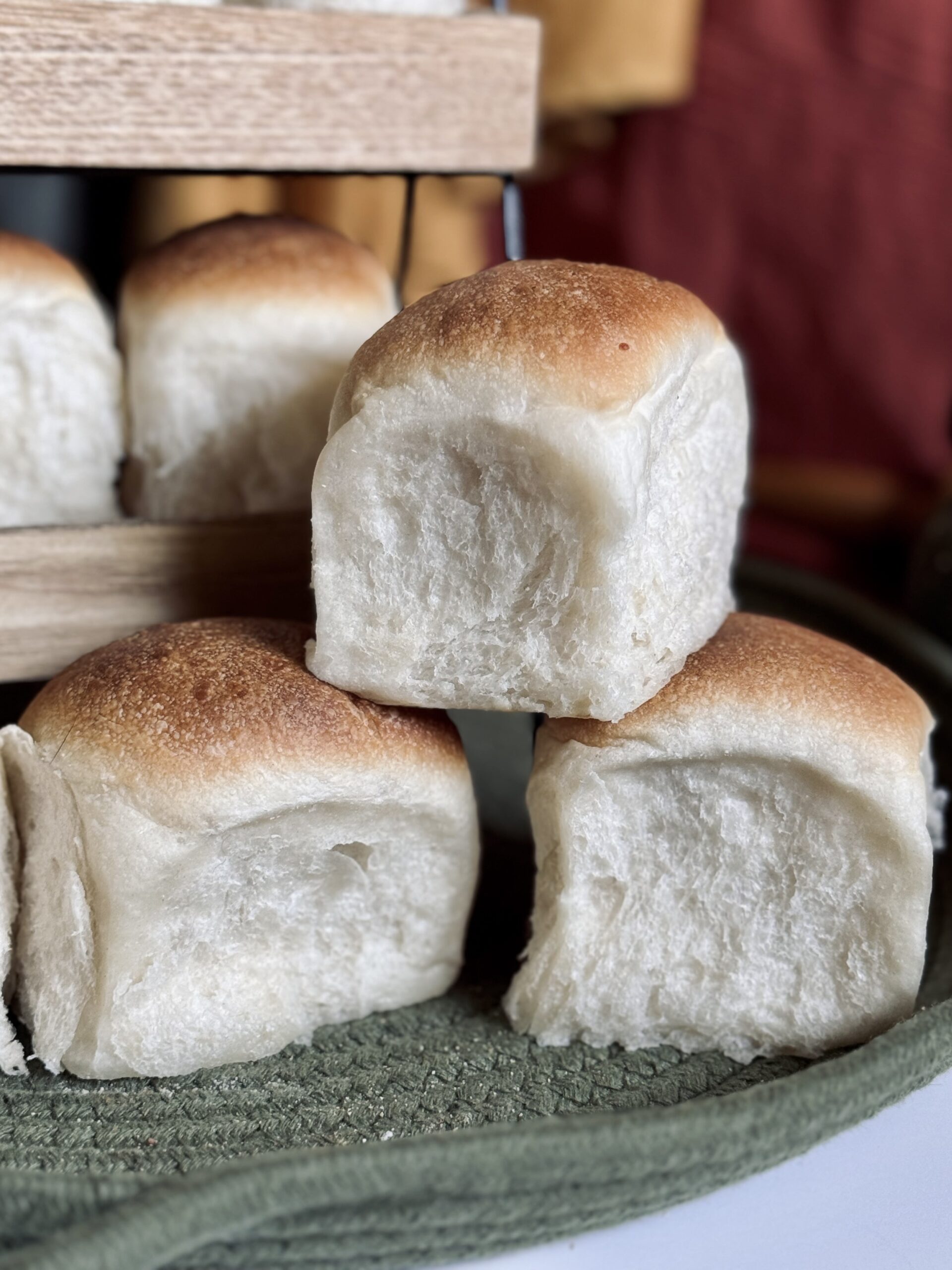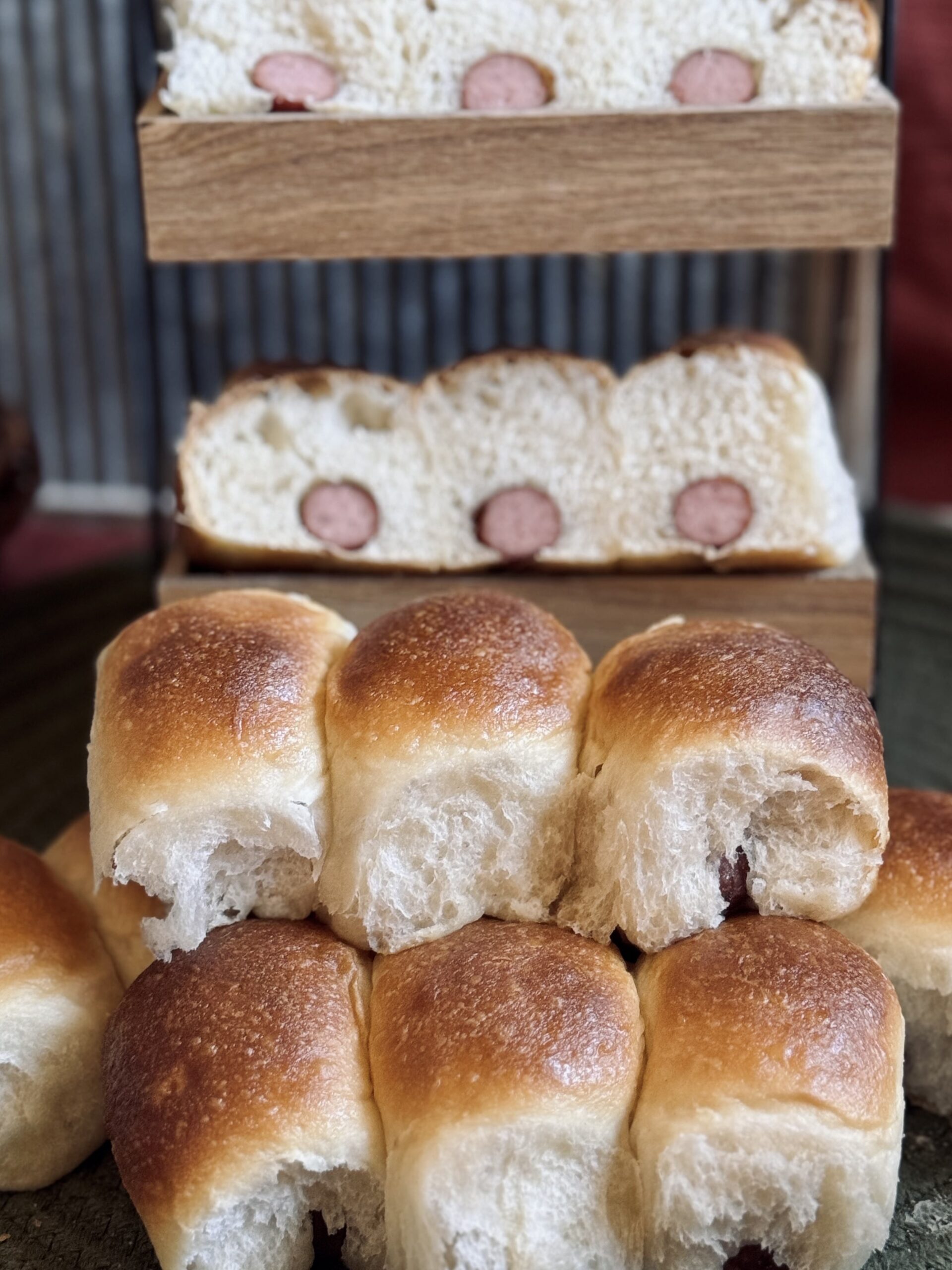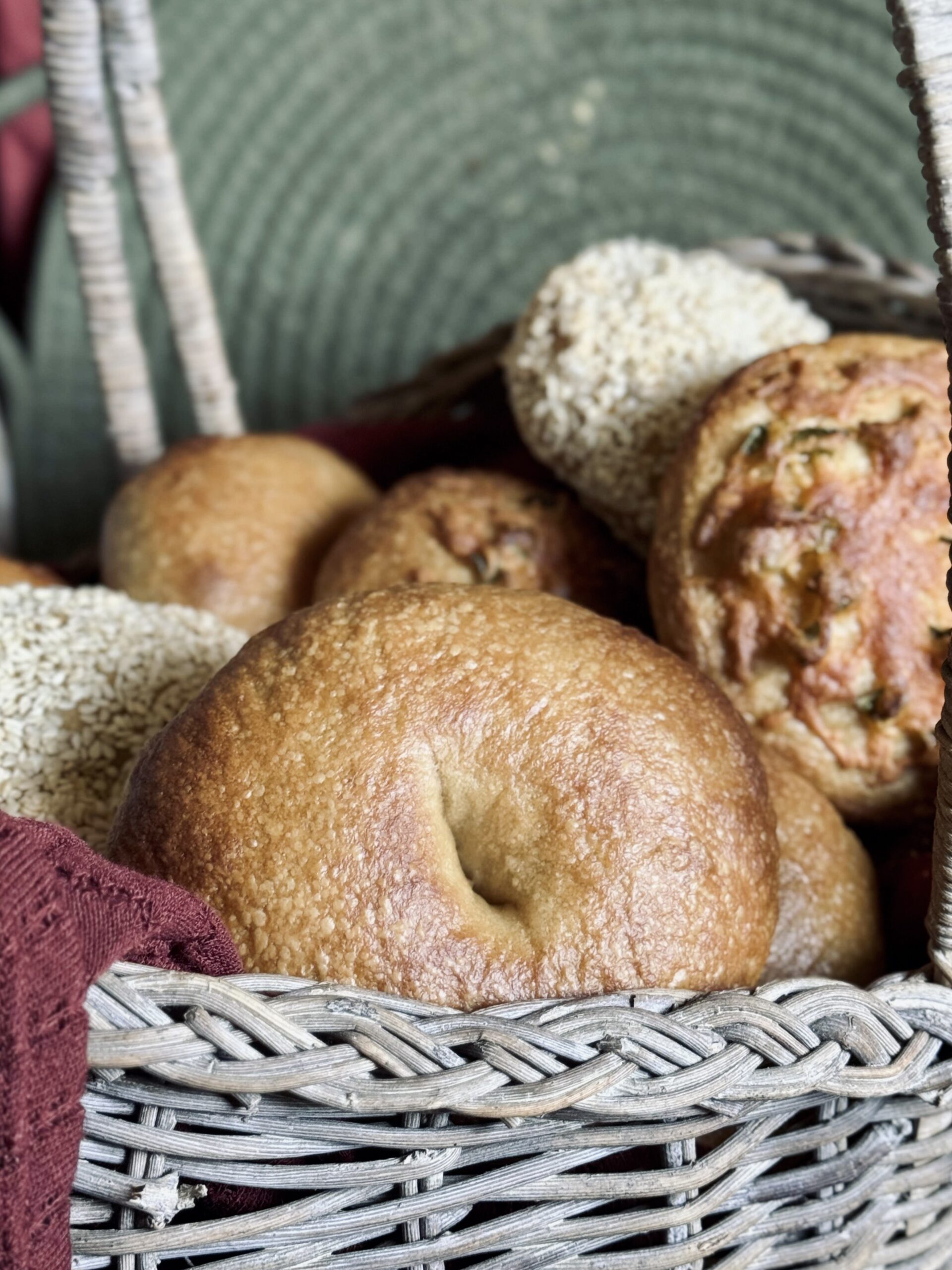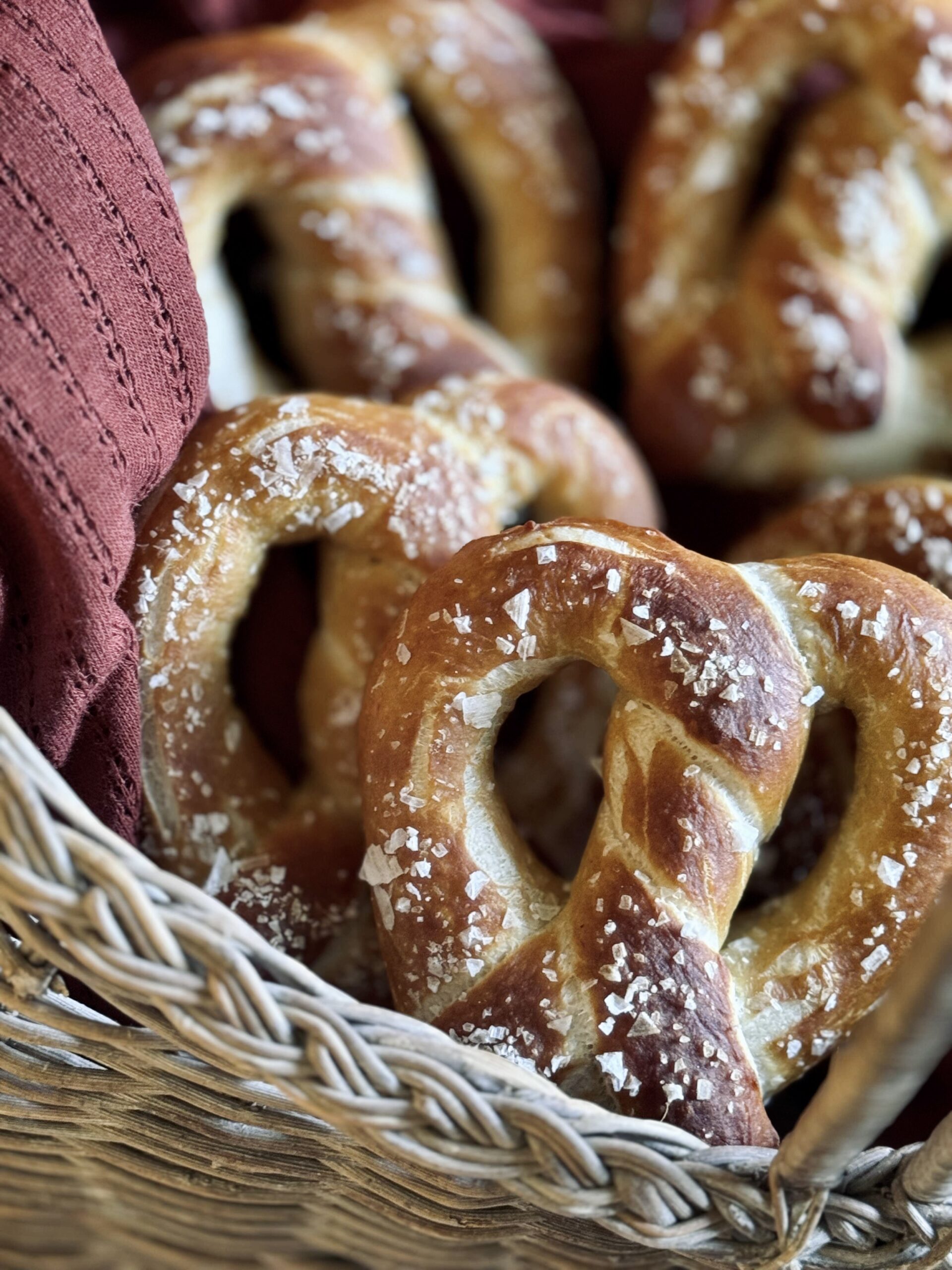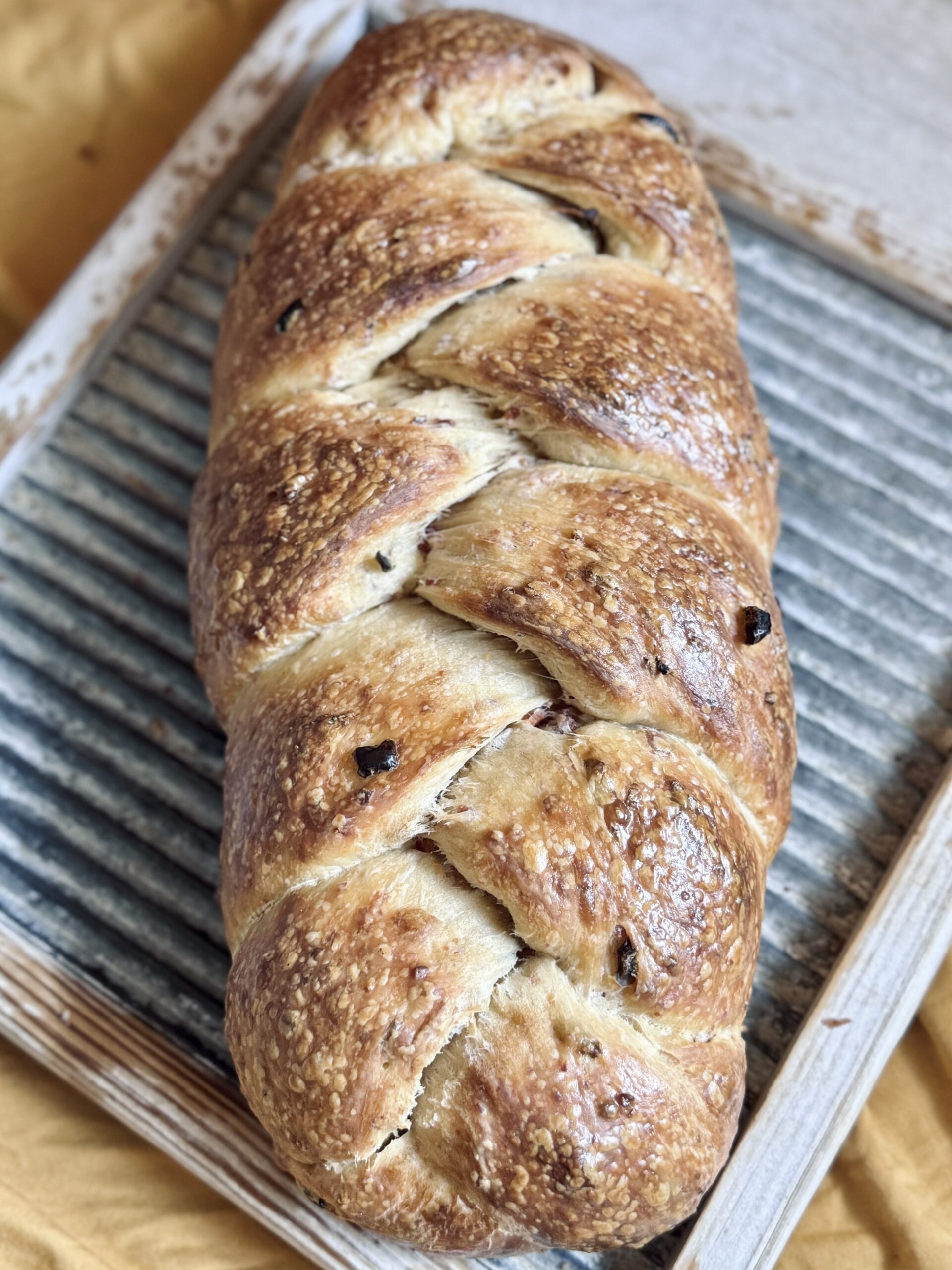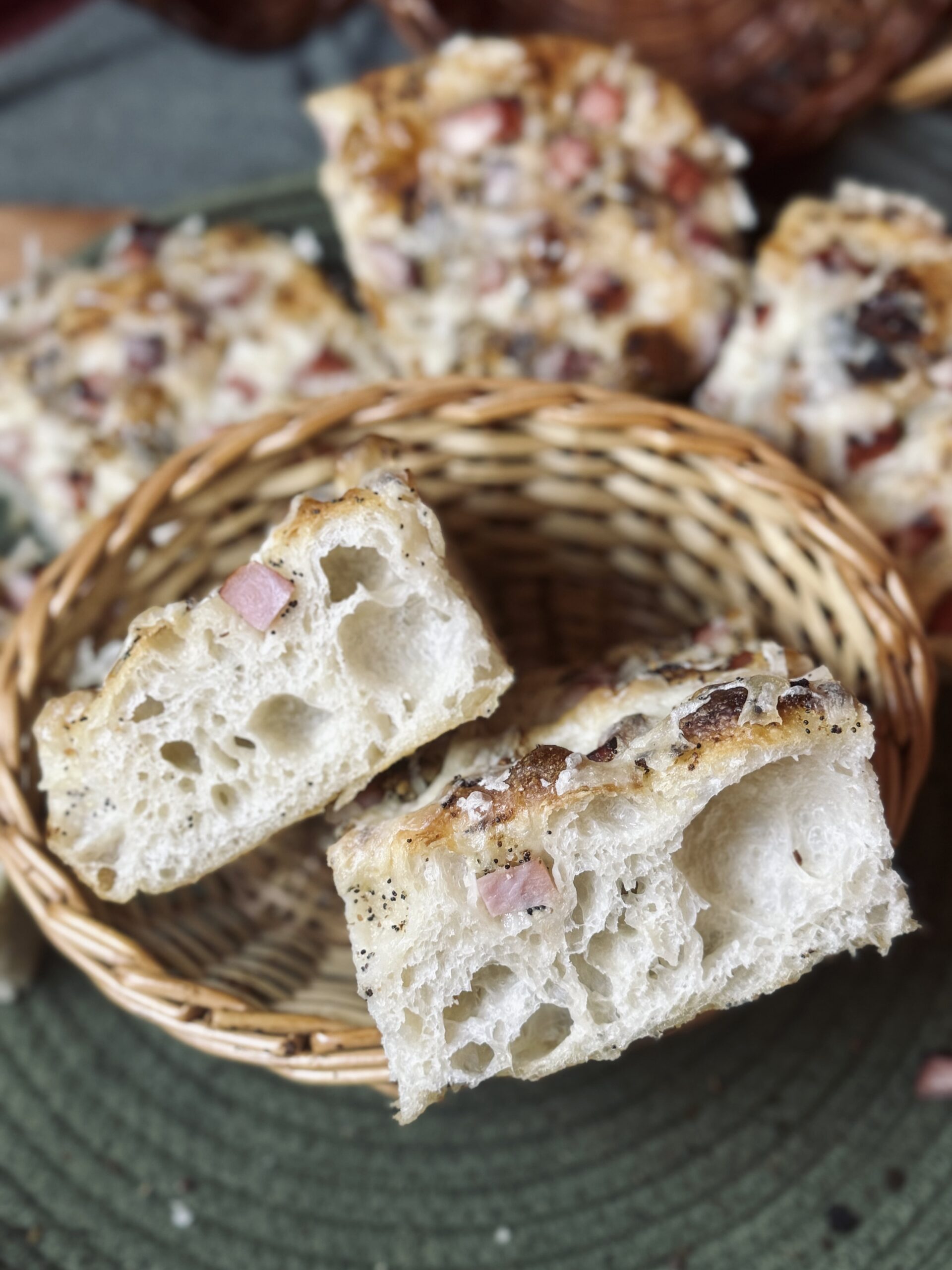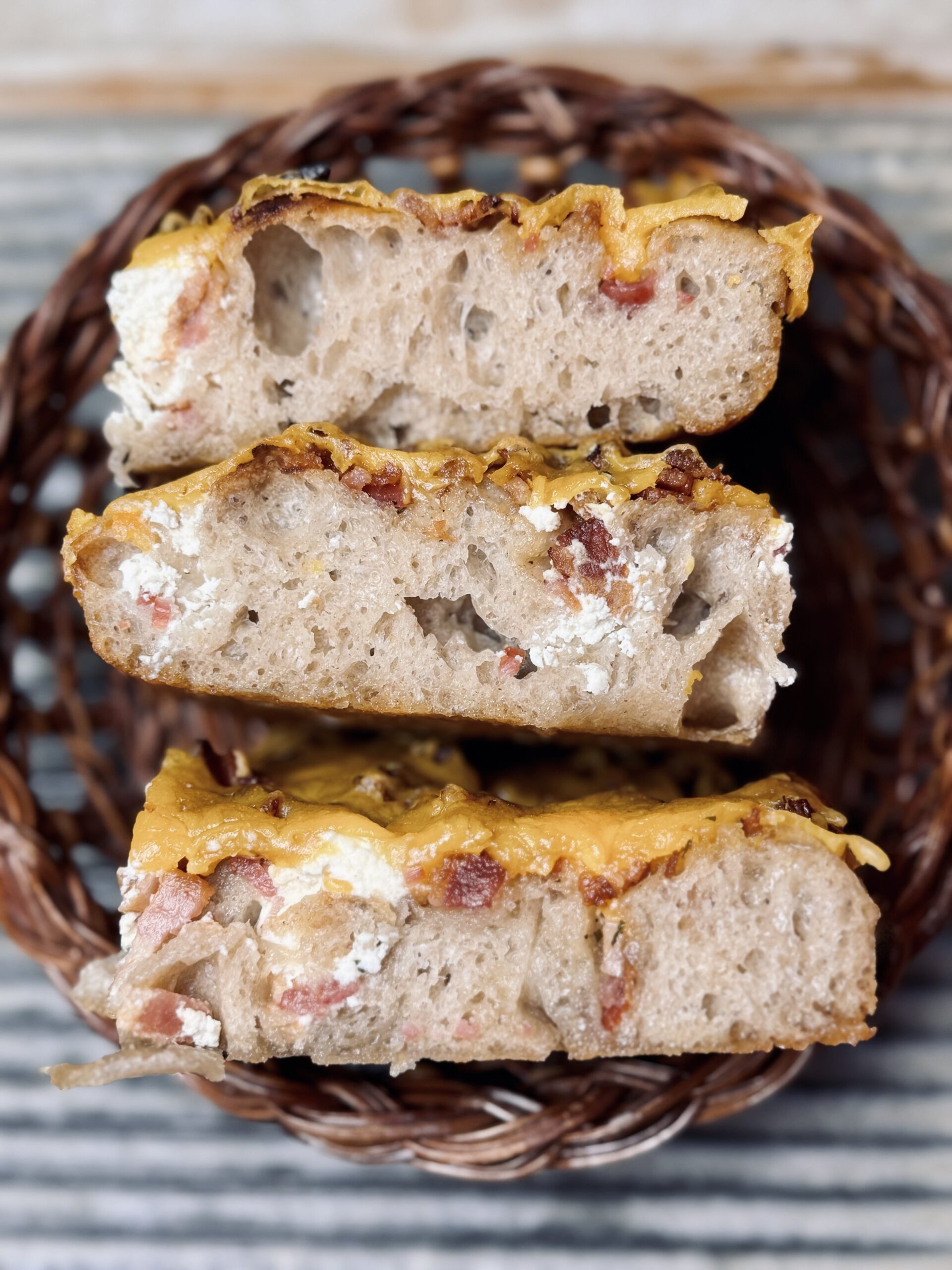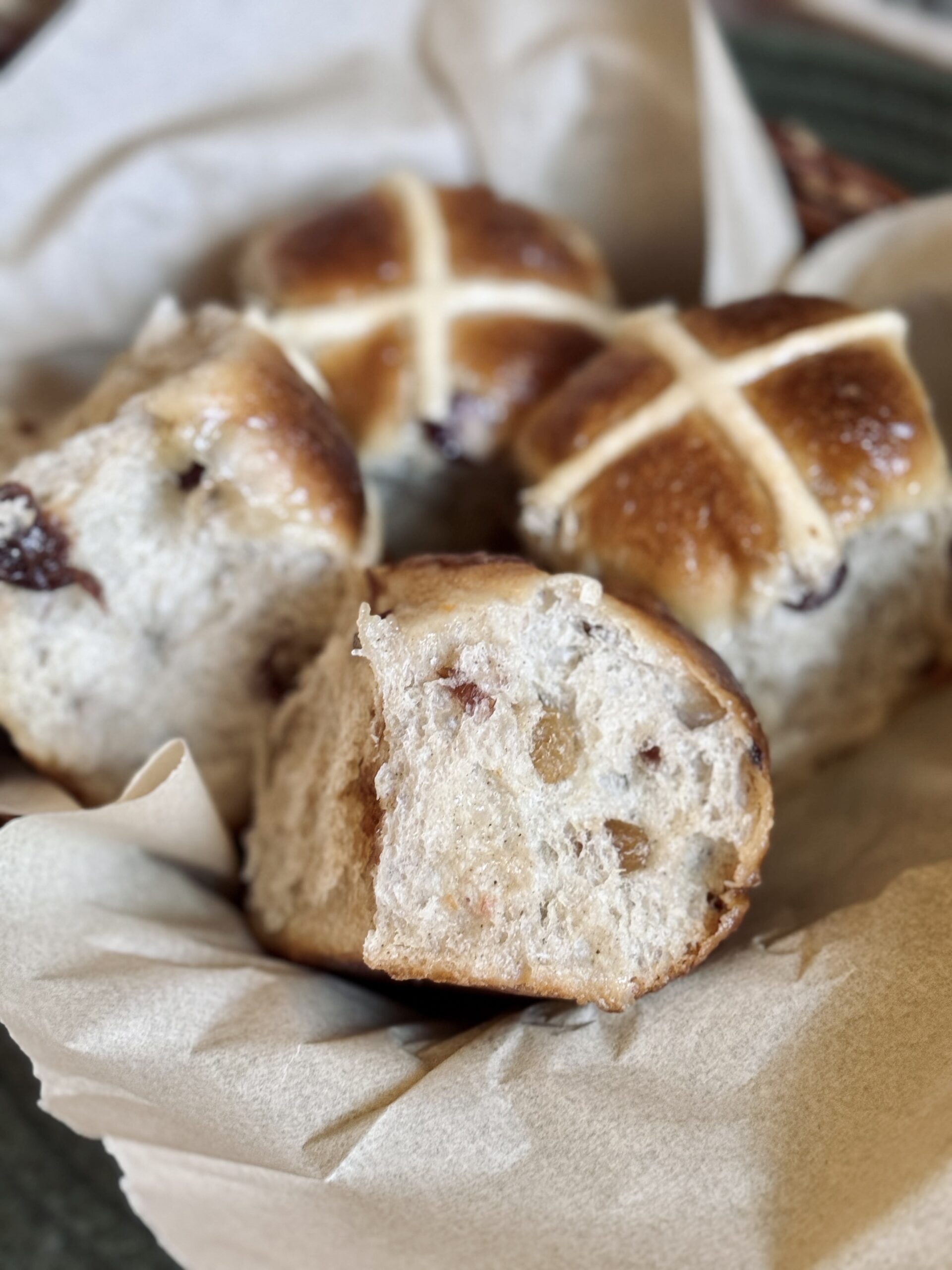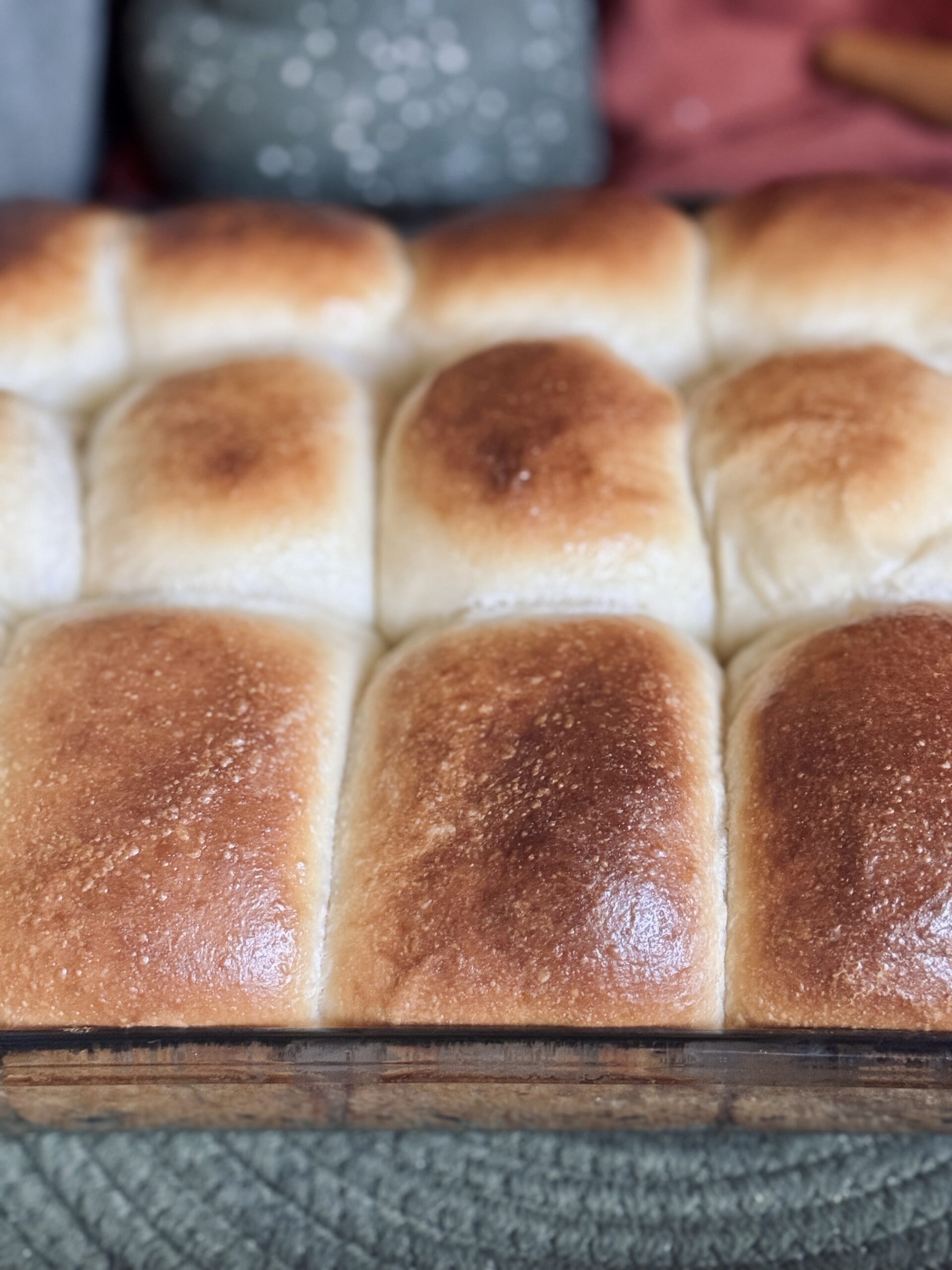About This Recipe
After the success of my beginner batter bread recipe, I wanted to create something with a similar concept. Let’s keep the long-fermentation, but build a completely different recipe.
I did just that with these corn muffins. Except, because of the cornmeal, it is hard to call this a beginner recipe. Since corn is gluten-free, the dough does not trap air in the same way that wheat does. Therefore, these muffins do not double in size. With a little trial and error, though, I think you will find these muffins worth your time. I have some tips that will help you find the success you’re looking for in this recipe.
What Is Cornbread?
Cornbread is a type of bread popular in the United States, particularly in the South. It is made from ingredients like flour, eggs, milk or buttermilk, baking powder, and sometimes sugar or honey for sweetness. It can be baked in a skillet, a muffin pan, or a baking dish. It is typically served as a side dish with meals such as: chili, barbecue, or fried chicken. It has a slightly crumbly texture and a light and sweet nutty flavor from the cornmeal. Inclusions such as jalapeños, cheese, or bacon can be added for fun and unique flavors.
What Is Meant By “Southern-Style”?
“Southern-Style” cornbread is a specific type of cornbread made with little to no flour (cornmeal is the star of the show) and without added sugar. The texture is a bit more gritty and nutty and the bread is not sweet in the slightest. Southern cornbread usually features buttermilk and may use bacon fat as a component of the recipe. It is also typically cooked in a preheated cast-iron skillet for added crispness along the edges.
What Is Unique About This Recipe?
This recipe is a mash-up of Southern cornbread (a quick bread) and long-fermented sourdough. Active sourdough starter is the leaven, meaning these muffins require fermentation time since they do not use chemical leavening (baking powder or soda). This recipe can even be made completely gluten-free by simply using a gluten-free sourdough starter. I added inclusions, onion and cheddar cheese, for an even better flavor and chose muffins over a preheated skillet for the simple fact that this batter needs time to rest and rise before it can be baked.
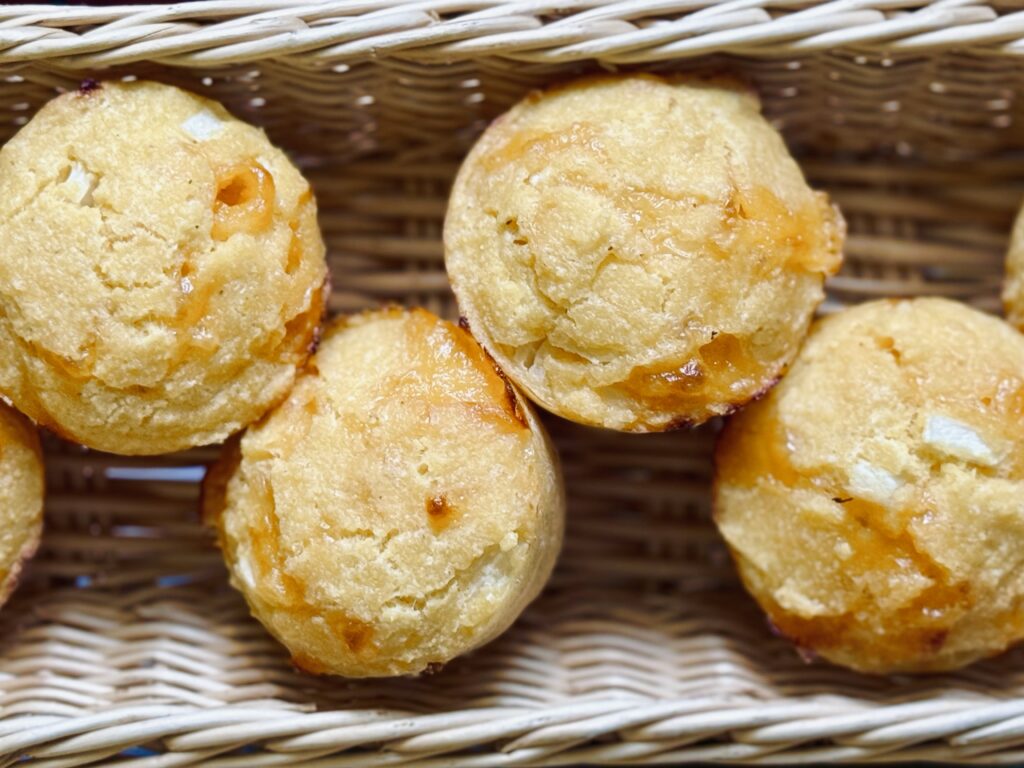
All The “Why’s”
Buttermilk
I use buttermilk, in combination with eggs, to add moisture to the batter. While milk is a suitable alternative, buttermilk adds a great tang that, in my opinion, really enhances the “Southern” flavor profile of this recipe.
Active Sourdough Starter
This recipe requires active sourdough starter, rather than discard. Let’s take a quick dive into why.
First and foremost, because this recipe is long-fermented, there is no chemical leavening (i.e. baking powder or soda). Our starter is doing the work needed to incorporate necessary air. This means we must use starter with yeast that are active.
But, once I mix the discard into the batter, won’t that feed the yeast and cause them to start multiplying again? Yes, it will, but not like we need them to. Yes, it will feed the yeast, but the yeast will be slow getting started since they were living in an inactive state. Yeast are what release CO2, which aerates your batter. You need them to be active and healthy in order for them to be able to do this properly.
But, couldn’t I just wait longer for them to properly multiply and aerate the dough? I do not recommend this. Why? Your starter also contains bacteria, which are responsible for fermenting the grains in your recipe. Usually this is flour, but in this recipe, it is cornmeal. The bacteria are multiplying at a much quicker rate than your sluggish yeast. They will not only power through all their food (cornmeal) before the yeast are finished aerating your batter (causing the dough to “overproof”), they will also create a very sour flavor in your bread.
That is why this is not a discard recipe. Use active starter. If you want to use discard instead, treat it like a discard recipe. Replace the active sourdough starter with sourdough discard. Add one teaspoon of baking soda (we can use soda due to the buttermilk and sourdough in the recipe) to the batter, then bake right away (just like regular cornbread or muffins).
Eggs
Eggs, alongside buttermilk, provide necessary moisture to the batter, which aids fermentation and keeps the baked muffins from drying out. More importantly, though, eggs create a fluffier, cake-like texture that could not be achieved with just any old liquid (like milk or buttermilk). Though I would not describe these muffins as “cake-like”, the eggs do help the texture overall. Last, the eggs (in addition to proper fermentation, of course) help these muffins to rise taller in the oven compared to other alternatives.
Butter
Butter is an absolutely essential component that keeps the muffins moist. While buttermilk and eggs provide moisture, fat helps retain this moisture through baking. I chose butter to compliment the flavors present from other ingredients in the recipe, but it could be replaced 1:1 with a neutral oil, if desired. Or, if you really want to maximize the “Southern” flavors in this recipe, use bacon grease instead.
Cornmeal
Now, we couldn’t have corn muffins without cornmeal, could we? The grain is what binds everything together and feeds/activates your starter. I use cornmeal as the one and only grain in this recipe, meaning I add no flour (besides what is in your sourdough starter). This is a classic characteristic of Southern cornbread. (Other types of cornbread use a 50/50 ratio of flour/cornmeal.)
Salt
Salt helps bring out flavor (without salt, bread would taste almost like nothing). It is important to use just the right amount, enough to bring out the flavor, but not so much that the muffins cannot ferment properly (salt slows fermentation). I use the standard – 2% salt – in all my recipes, unless otherwise noted.
Inclusions
I chose to stuff these muffins with onions and cheese, which act as flavor-enhancers that, once again, contribute to the overall “Southern” flavor profile of the bread. While you can easily remove the inclusions from the recipe without harm, if you choose to replace them with something different, remember to think carefully about how the ingredients you want to add might affect fermentation. Bacon would be fine, but jalapeños would slow things down. Replacing the onion with extra cheese would work well, but adding tomatoes could throw off moisture. The choice is yours, just be careful.
Fermentation
Proper fermentation is essential to the perfect sourdough corn muffins; these muffins are simple and difficult to ferment all at once. The timing is similar to my beginner batter bread recipe (the baker’s percentages are the same), except may be extended slightly due to the eggs and onion in the batter, which can slow things down.
Cornmeal is a gluten-free grain, which means it cannot trap air in the same way that wheat can. Certain gluten-free grains do not rise much, if at all, and cornmeal is one of them. Because there is no added wheat flour in this recipe, there is hardly any rise that occurs before the final oven spring. Visual cues cannot be used to determine if these muffins are proofed properly; rather, a knowledge of the fermenting environment and timing is necessary. With these, I have never fermented them too long. The longer the better.
There is one visual cue you can use to help you know when these muffins might be ready to go into the oven: they will form a dome on top. When this happens, go ahead and bake them: they have fermented enough.
Baking Method
These bake at 425 F (220 C) for only fifteen minutes and can be enjoyed fresh from the oven. The high oven temperature helps provide the perfect oven spring and completes baking in no time.
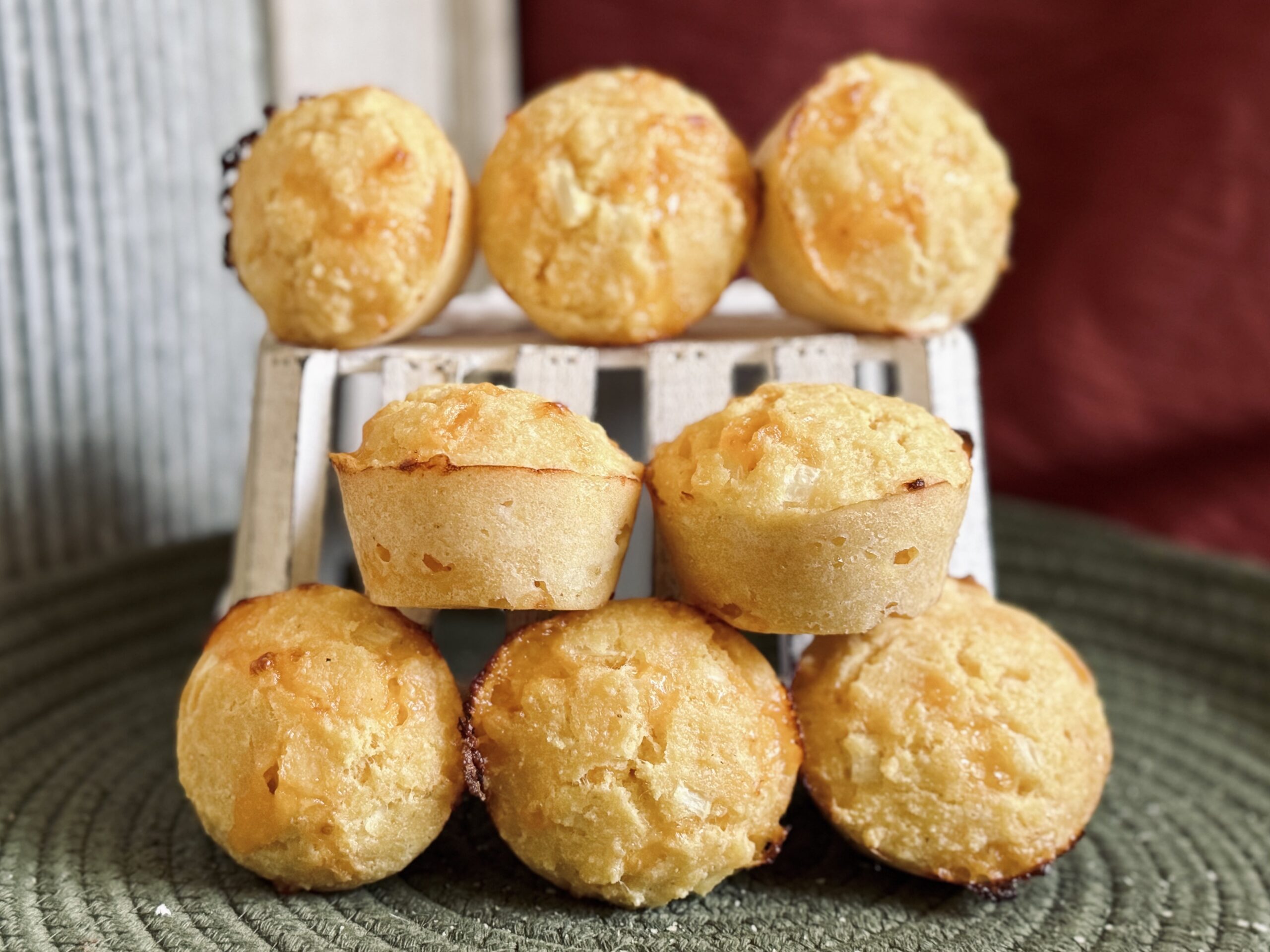
Suggested Timeline
DAY 1
8:00 – 9:00 a.m.
- Chop onions and shred cheese.
- Mix the ingredients.
- Divide into twelve muffins.
4:00 p.m.
- Bake and enjoy! (Just in time for supper!)
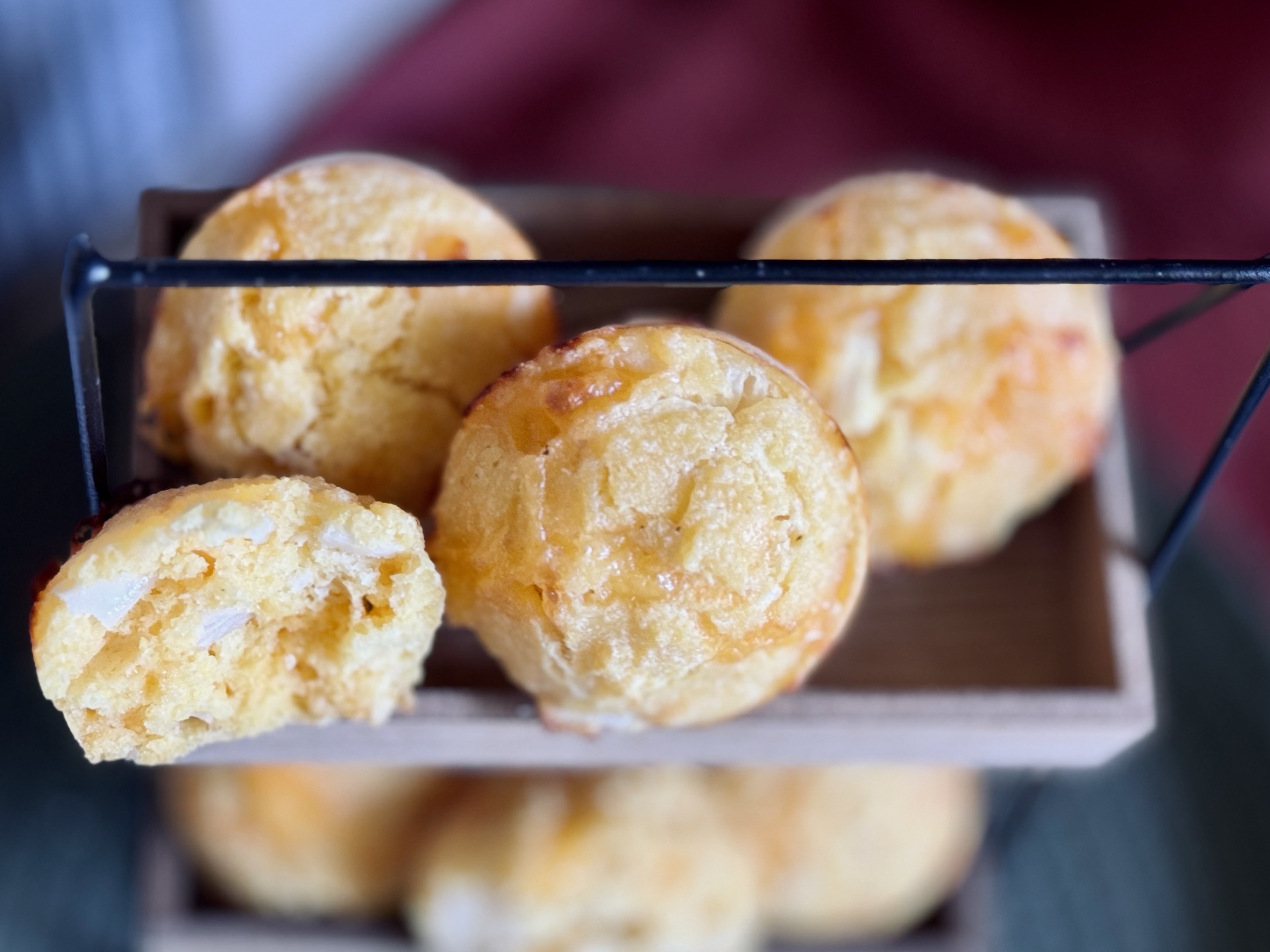
📌 Quick Tip: Read the recipe in its entirety before you start cooking. This will help you understand the ingredients, steps, and timing involved, and allow you to prepare any necessary equipment or ingredients beforehand.
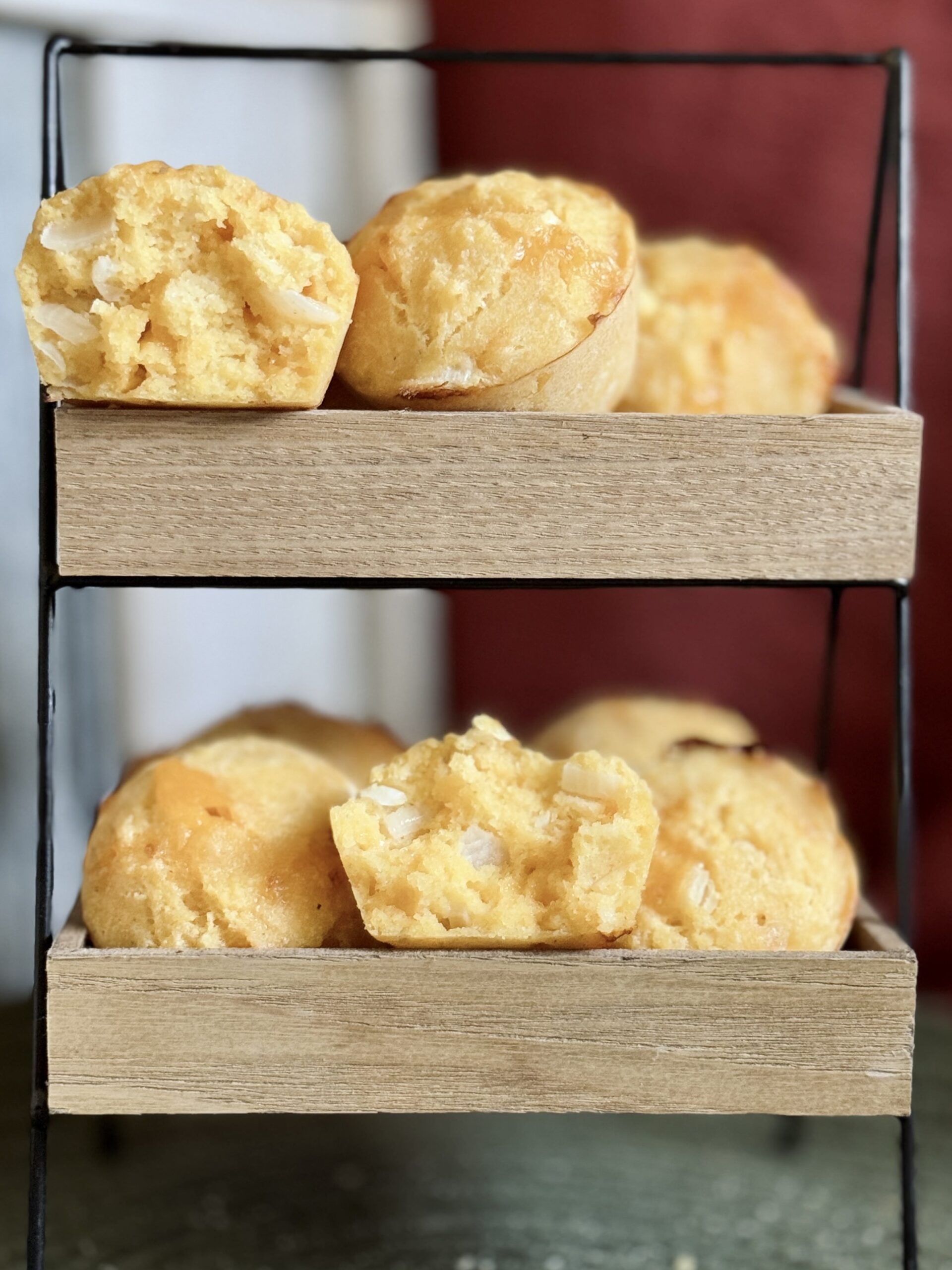
Southern-Style Corn Muffins
Ingredients
Instructions
Mix And Divide
-
Grease or line a 12-cup muffin pan.
-
In a medium mixing bowl, whisk the buttermilk, active starter, eggs, and melted butter.
-
Add the cornmeal and salt to the bowl and mix well.
-
Stir in the cheddar cheese and chopped onion.
-
Divide evenly among the prepared muffin cups. The batter should fill the cups just to the top.
Ferment
-
Rest at room temperature for 3-8 hours, depending on the warmth in the room. The muffins will not look much different when they are ready for the oven, due to a lack of rise from the gluten-free cornmeal. They may form a dome on top; if this happens, it is definitely time to bake. The timing for this recipe is similar to my recipe for batter bread, though the muffins can ferment even longer due to the addition of eggs and cornmeal.
Bake
-
Bake at 425 F (220 C) for 15 minutes, or until a toothpick comes out clean. Enjoy warm.
Servings 12
- Amount Per Serving
- Calories 203.08kcal
- % Daily Value *
- Total Fat 8.43g13%
- Saturated Fat 4.56g23%
- Cholesterol 50.6mg17%
- Sodium 181.19mg8%
- Potassium 98.2mg3%
- Total Carbohydrate 25.34g9%
- Dietary Fiber 1.26g6%
- Sugars 2.04g
- Protein 6.28g13%
- Vitamin A 80.28 IU
- Vitamin C 0.76 mg
- Calcium 90.05 mg
- Iron 1.57 mg
- Vitamin D 0.21 IU
- Vitamin E 0.31 IU
- Vitamin K 0.69 mcg
- Thiamin 0.21 mg
- Riboflavin 0.23 mg
- Niacin 1.65 mg
- Vitamin B6 0.08 mg
- Folate 21.01 mcg
- Vitamin B12 0.2 mcg
- Phosphorus 104.54 mg
- Magnesium 16.36 mg
- Zinc 0.74 mg
* Nutrition values are auto-calculated and should be used as an approximation only. In addition, the values may not accurately represent the serving divisions of the recipe, instead representing the nutrition of the recipe as a whole.
Notes
- Storage: Store muffins in the refrigerator 5-7 days, or in the freezer. To reheat, microwave in 30 second intervals (wrapped in a damp paper towel) until warmed through. Alternatively, reheat in a 350 F oven (wrapped in aluminum foil) for 5-10 minutes (or up to 15 minutes from frozen), until warmed through.


